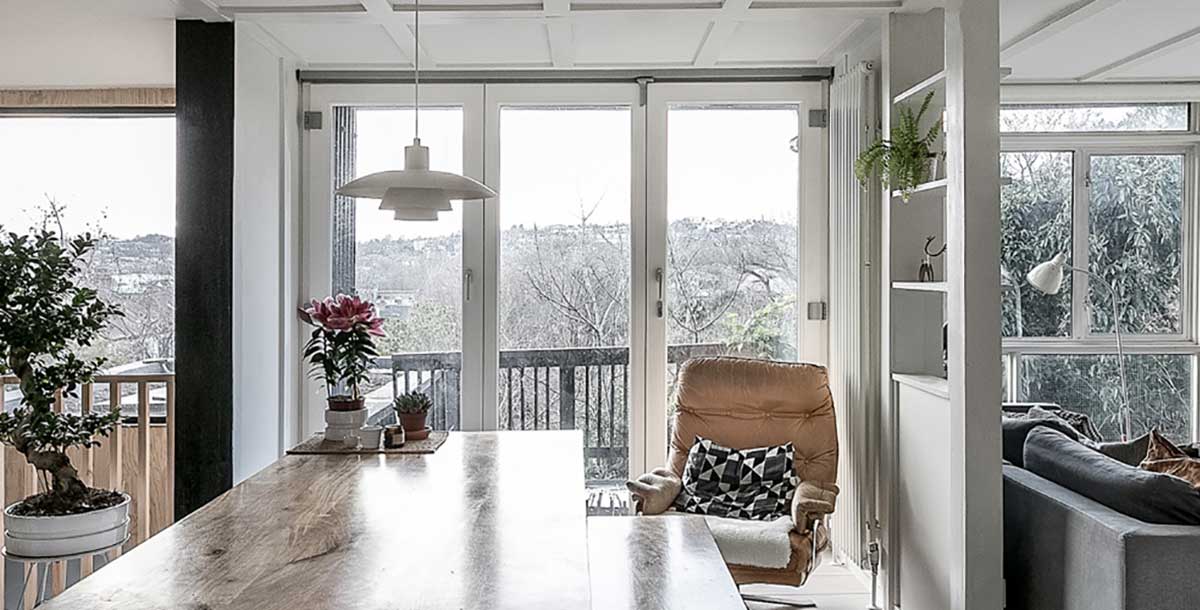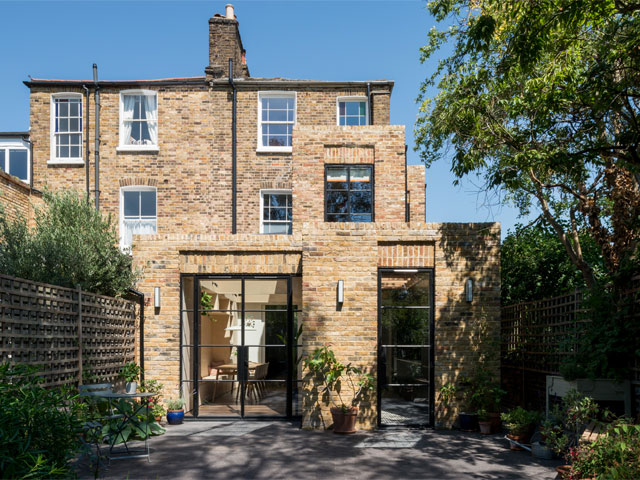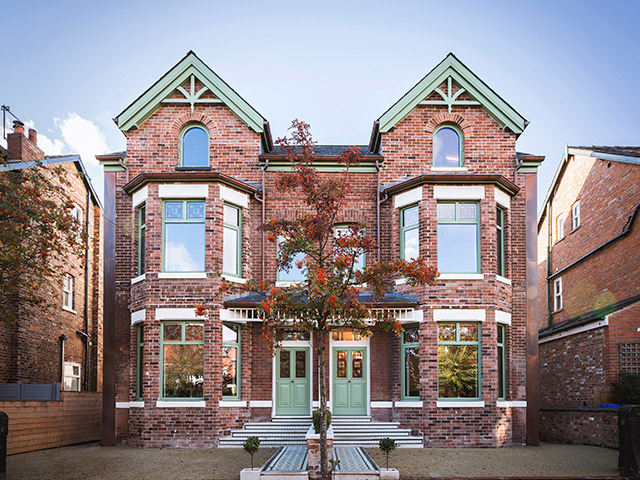Walter Segal self build extension project
Adding extra space to this family home was a matter of staying true to the principles of its architect
This Walter Segal self-build house has a new addition that provides extra space for the family who own it – Taran and Celine Wilkhu, who have two children. Their home was built in the 1970s as part of a self-build community in Lewisham, London.
A scheme based on a system designed by the late architect Walter Segal. The couple’s extension plans included a home office, a den for the children, and to create space for a bigger kitchen.
The exterior design conjures the idea of a negative imprint of the original building. Black metal sheets form rain screen cladding. And bright blue windows contrast with this midnight hue. This is the reverse of the main house. The green roof planting includes wildflowers to marry the building into its leafy surroundings.
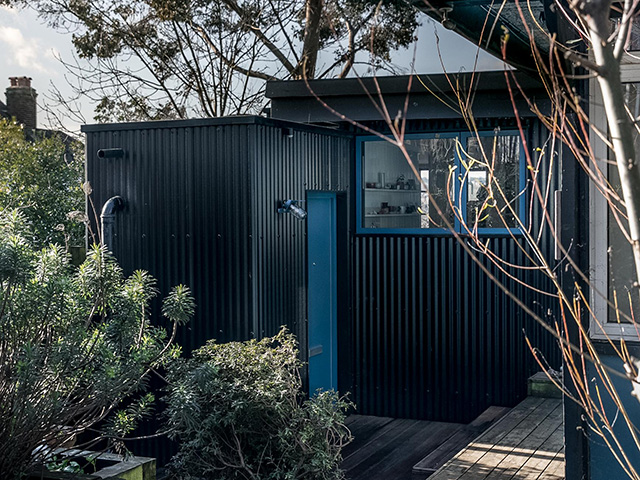
Black corrugated iron panels clad the exterior. Image: Taran Wilkhu
The Walter Segal influence
The couple bought their home several years ago after researching the development. Taran and Celine were drawn to Segal’s approach, and Taran has subsequently contributed to a book about the Walter Segal homes.
Do Segal’s methods have relevance to self builders today? ‘They are very valuable,’ says Lizzie Fraher, design director of Fraher & Findlay, the practice behind the renovation. ‘They should be seen as a guiding force for all self builders.’ The couple were keen to embrace the Segal way. It involves a simplification of design and construction and using readily available materials.
By designing to a grid, as Segal did, it was easier to reshuffle the spaces, such as when relocating the front entrance. So, using affordable, off-the-shelf materials, Taran and Celine were able to project manage the build and reduce the need for specialist trades. Segal’s ideas still work to make constructing a home more accessible.
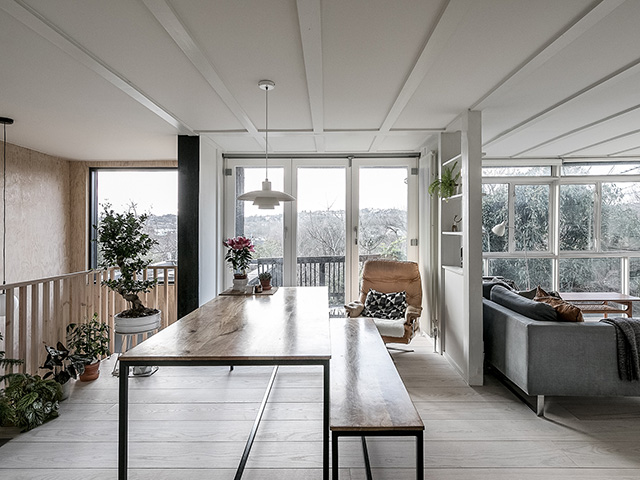
The new dining space in the expanded kitchen area. Image: Taran Wilkhu
Bridging the gap
As part of the renovation, a narrow extension, at some points just 1.2m wide, acts to enhance the quality of the living spaces. And, because the plot is on a gradient, the garden is at a lower level than the house. So, the extension bridges this difference and offers easier access to the garden.
‘It is a slim extension that runs the depth of the building and provides an important tool to link the levels of the garden and the house,’ Lizzie explains. ‘It tucks extra space such as a den under the body of the house.’
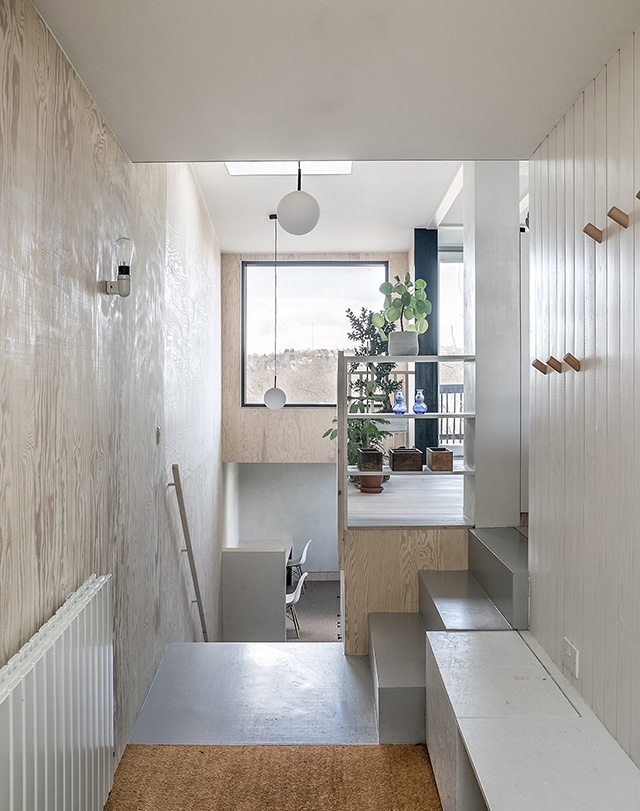
The extension includes steps leading down to the home office. Image: Taran Wilkhu

